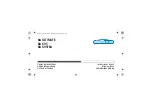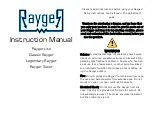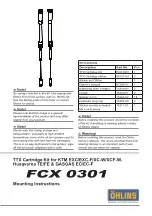
1-2
U
SER
M
ANUAL
750000992/16
Measurement Principles
MTS
e
The measurement result should provide:
•
the attenuation
•
the location of faults in terms of distance from defined point
•
the attenuation versus distance (dB/km)
•
the reflectance of an event or an optical link
Attention
In so far as location is concerned, it should be noted that an OTDR is
a time domain machine (Optical Time Domain Reflectometer). Con-
sequently, group velocity must be introduced in order to determine
the distance of the location. This is done by introducing the refrac-
tive index of the fiber into the instrument.
Measurement validity
The ITU-T Recommendations G.651 and G.652 state backscatter measurement as
the second replacement method for the measurement of attenuation. The cut
fiber technique is the reference method.
The field of application for backscatter measurement is not limited, but the
conditions for application of this method are nevertheless stipulated:
•
In so far as insertion conditions are concerned, Fresnel reflections should be
limited at fiber input.
•
A high power source (laser) should be used.
•
Receiver bandwidth should be selected so as to achieve a compromise
between pulse rise time and noise level.
•
Backscatter power should be represented on a logarithmic scale.
Reflectance
Reflectance is a characteristic allowing the reflection coefficient of a reflecting
optical element to be quantified. It is defined as the ratio of the power reflected
by the element over the incident power.
The reflections are due to variations in refractive index along the fiber optic link,
in some Telecom applications. If these reflections are not controlled they may
degrade the system performance by perturbing the laser emitter operation
(particularly DFB lasers), or, in the case of multiple reflections, generate
interference noise in the receiver.
The OTDR is particularly suited to reflectance measurements on a fiber link. The
amplitude of the generated Fresnel reflection is measured, then the result is
converted to reflectance.
The conversion formula takes into account:
•
the amplitude of the reflection measured
•
the pulsewidth used to measure the reflection’s amplitude (in nanoseconds)
Artisan Technology Group - Quality Instrumentation ... Guaranteed | (888) 88-SOURCE | www.artisantg.com















































